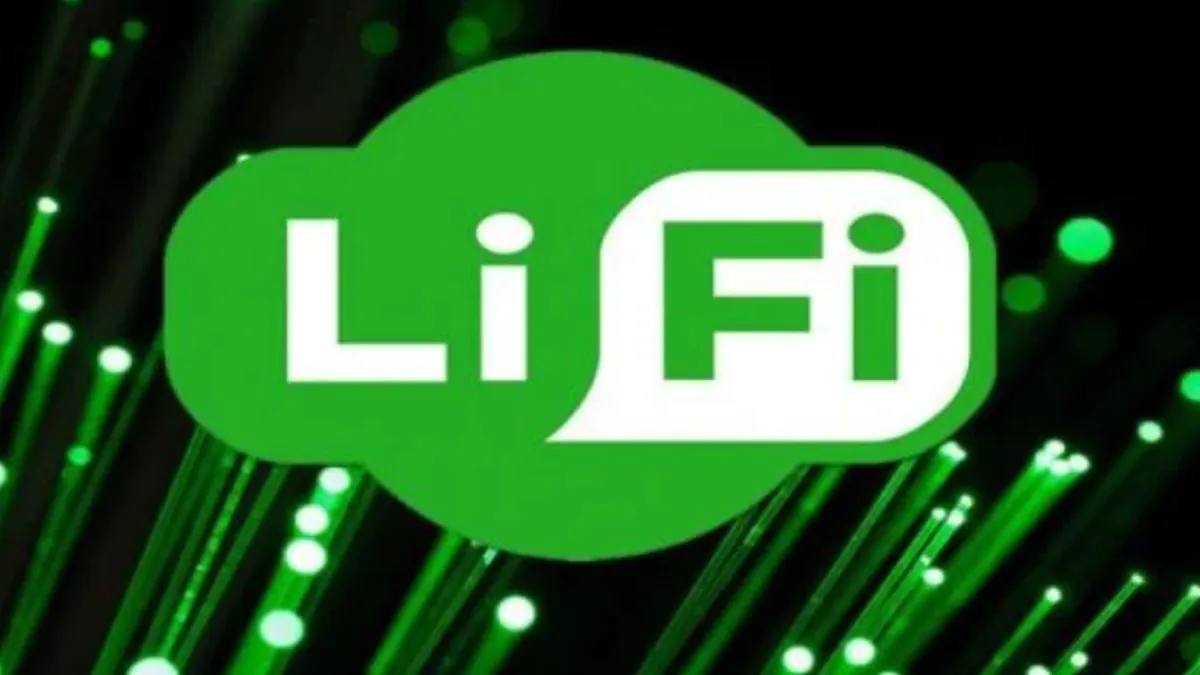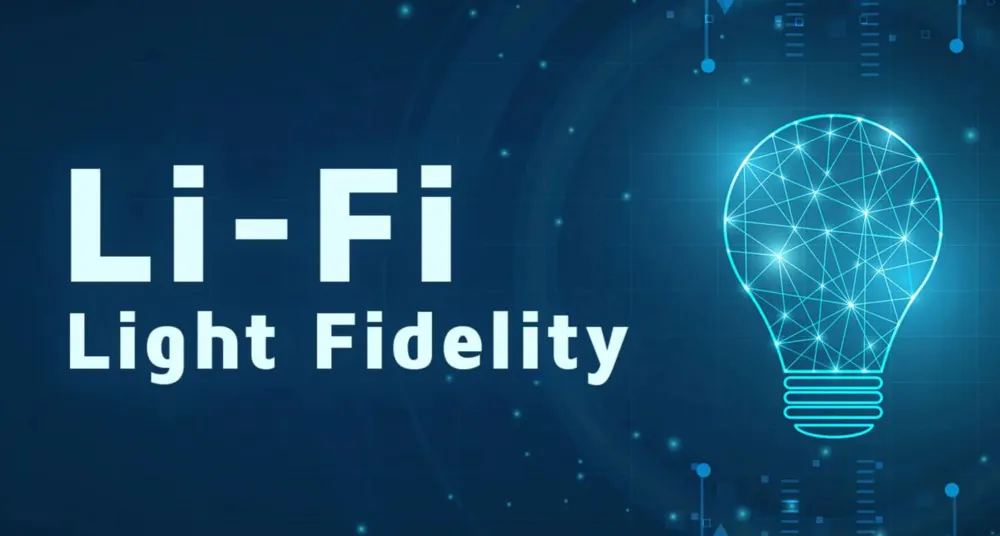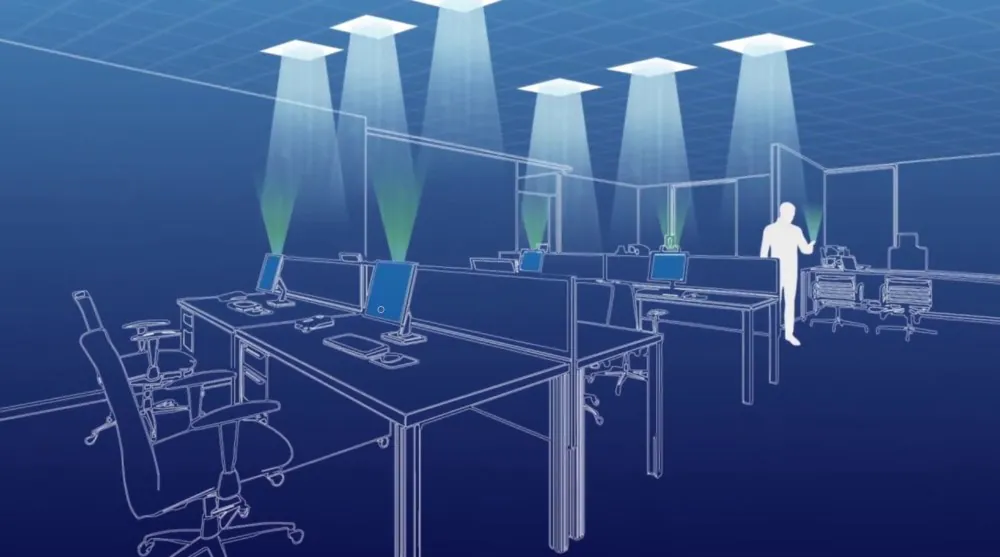© ROOT-NATION.com - Use of content is permitted with a backlink.
A new era of fast and secure wireless Internet is waiting for us? We are talking about the new Li-Fi technology, which has already received the IEEE 802.11bb standard.
Li-Fi technology can provide us with fast and secure wireless internet access even in environments that already have strong Wi-Fi coverage. It is not a replacement for Wi-Fi, but a complementary technology that can work with it to offer additional spectrum for devices to use, or to limit network access by utilising the very nature of this light technology.

Li-Fi has the potential to revolutionise not only the way we access the internet, but even replace a bunch of cables that make up the backbone of the modern internet.
Read also: 7 coolest ways to use ChatGPT
What is Li-Fi?
Li-Fi is an acronym for Light Fidelity, it is a communication system that uses light rather than radio waves to transmit data. A Li-Fi network transmits and receives data using infrared LED lights, using light intensity modulation to create a digital signal that transmits information between different networked devices.
Li-Fi has the potential to be much faster than traditional Wi-Fi – up to 100Gbps. However, a recently approved amendment to the Wi-Fi specification that adds support for Li-Fi, IEEE 802.11bb, estimates the minimum throughput of Li-Fi technology at 10 Mbps and a maximum throughput of 9.6 Gbps. That currently puts it in roughly the same range as Wi-Fi 6.

Due to the fact that Li-Fi uses light to transmit data, connection support is dependent on line of sight. Although the signal can reflect off walls and other objects, it is very much affected by interference and limitations, and the maximum range is approximately 10 metres.
Obviously, Li-Fi will be used in the home as an auxiliary layer of connectivity, providing faster data rates and the ability to connect more devices simultaneously to a compatible router without reducing connection speeds. Li-Fi can also be used in environments where tampering is commonplace and data privacy is extremely important, such as hospitals, schools and financial institutions.

Data centres can also derive some benefit from this technology. Li-Fi can be used to transmit data over short distances where cabling would be too difficult or expensive, and Wi-Fi would be too dangerous or prone to interference.

Another application area for Li-Fi could be wireless virtual reality transmitters and receivers. Since wireless VR setups have a relatively small range but require high bandwidth, Li-Fi could be an ideal solution for AR\/VR in the future.
Read also: Bluesky phenomenon: what is the service and how long will it last?
How does Li-Fi work?
Li-Fi works by using infrared LED lights to send and receive light pulses invisible to the human eye. These pulses are modulated at an intensity of billions of times per second, and these modulations wireless receivers can track and convert into data.
It’s a bit like how Wi-Fi works with radio waves, except that radio waves can pass through or around obstacles more easily. Li-Fi can do this to some extent, but it is more dependent on line of sight, which places limitations on its range and ability to be used outside of homes and in open-plan offices.

Although we will probably see Li-Fi routers in the future. The basic idea is to utilise Li-Fi through ceiling mounted light fittings. This would allow data to be transmitted through the existing electrical infrastructure of the home and then use the Li-Fi lights to wirelessly transmit data to wireless devices.
Read also: What are 6G networks and why are they needed?
Advantages of Li-Fi
Due to its much higher frequency than radio waves, Li-Fi has the ability to handle more channels simultaneously than traditional Wi-Fi networks. This makes it much less susceptible to interference from other devices or networks due to its limited range. This can make Li-Fi useful in busy data centre environments, where a Li-Fi transmitter and receiver system can replace cables or wireless networks that would otherwise be susceptible to interference.
This also increases security, as it’s impossible to connect to a Li-Fi network inside a building unless you’re in that building, or find some kind of leak through a window or something similar.

Li-Fi is designed for transmission speeds of up to 100 Gbps. That’s almost 10 times faster than the fastest Wi-Fi networks, and even faster than some of the fastest wired Ethernet connections. For now, however, this is more theoretical than practical. The IEEE 802.11bb standard is the first step in bringing Li-Fi technology to market, and it has a maximum throughput of 9.6 Gbps – about the same speed as Wi-Fi 6.
Read also: Geoengineering challenges: EU to ban scientists from ‘playing God’
Disadvantages of Li-Fi
Li-Fi transmission may be less susceptible to interference from other networks, but physical objects such as walls do present a real problem for it. Although the light signal can be reflected at some angle if set up correctly, and walls are a reflective surface. Ideally it needs line of sight to operate with maximum efficiency and performance. This limits the maximum range of Li-Fi networks to around 10 metres – this is much shorter than most Wi-Fi networks, and much, much shorter than the most powerful wired networks.

Li-Fi is incompatible with any existing Wi-Fi based networking equipment, so if you want to use a Li-Fi network instead of, or in conjunction with, an existing network, you will need completely new equipment to take advantage of its benefits. That is, you’ll need Li-Fi-equipped devices and a new range of lights with Li-Fi technology built in. If you’ve already upgraded your home with smart bulbs, doing it again for Li-Fi can be very expensive.
To make matters worse, there are still very few options for Li-Fi networking equipment, and virtually no devices that support it.
Read also: Google Bard AI: everything you need to know
When will it be possible to use Li-Fi?
As of mid-2023, you can buy Li-Fi-enabled devices and routers from some manufacturers that are not the usual Wi-Fi router manufacturers and tend to focus on niche use cases. With the ratification of the IEEE 802.11bb standard, manufacturers can create devices that work with both Li-Fi and Wi-Fi together. Since most Li-Fi proponents see it as something that complements Wi-Fi rather than replaces it, we’ll likely see combined routers and Wi-Fi/Li-Fi devices before the technology really gains traction.

It is hoped that in the coming years, manufacturers will offer Wi-Fi and Li-Fi compatible routers that can use both systems simultaneously for additional performance and extra redundancy, or in scenarios where dual systems are needed or beneficial.
Some manufacturers are promising to release the first Li-Fi routers by the end of 2023.
Read also:
- Motorola Edge 40 review: the one that’s “top for its money”
- Huawei Watch 4 Pro review: An incredible watch with one drawback
- 4 types of batteries of the future that will power our devices

